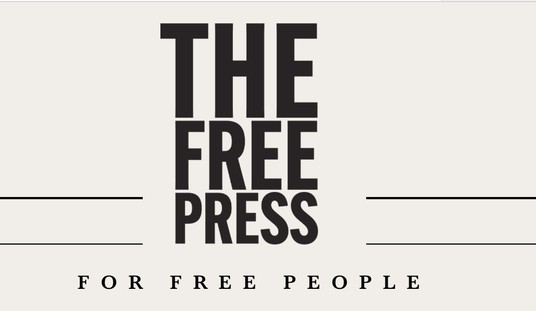That’s odd. What could Democrats possibly see in a lifelong true conservative like Donald Trump?

There’s something for everyone in Nate Cohn’s new post. If you’re a Trump fan, here’s the smoking gun that he really is a new Reagan, the guy who’s going to broaden the tent and sweep to victory in November by bringing centrist Democrats into the GOP. If you’re a Trump critic, here’s further proof that he’s the RINO of RINOs, a man who’s blended nationalism, center-left economics, and Jacksonian foreign policy into something that tastes better to members of the other party than it does to conservatives. That sounds a lot like Perotism, frankly — except, according to the (Democratic) pollster who provided Cohn with data, Trump’s geographic support is the opposite of Perot’s. Perot did best in the west and in New England. Trump cleans up in the south, up through Appalachia, and into the industrial northeastern states like New York. How do you explain that?
Cohn’s theory, comparing Trump’s map of support to a map of “racially charged Internet searches,” is that prejudice is driving some of his votes. There was nothing comparable in Perot’s campaign to Trump inveighing against rapists from Mexico and calling for a temporary ban on Muslims entering the United States. (There’s no disputing that Trump is the favored candidate of the white nationalists of the “alt-right.”) On the other hand, how many Trump voters in economically distressed industrial areas in the eastern U.S. like Trump’s immigration rhetoric because they “hate” Mexicans and how many simply want less competition from foreign labor in the name of bringing back jobs to America? According to Cohn, Trump’s best state is West Virginia; West Virginia also happens to be the only state in the U.S. where (as of March of this year) less than half of the adult civilian population is employed. Being a protectionist doesn’t make you a racist. Either way, though, this part is certainly true — and important to the future of the GOP:
In many of these areas, a large number of traditionally Democratic voters have long supported Republicans in presidential elections. Even now, Democrats have more registered voters than Republicans do in states like West Virginia and Kentucky, which have been easily carried by Republicans in every presidential contest of this century. As recently as a few years ago, Democrats still had a big advantage in partisan self-identification in the same states.
But during the Obama era, many of these voters have abandoned the Democrats. Many Democrats may now even identify as Republicans, or as independents who lean Republican, when asked by pollsters — a choice that means they’re included in a national Republican primary survey, whether they remain registered as Democrats or not.
Conn Carroll put it this way:
https://twitter.com/conncarroll/status/682554702630924288
Right. The GOP is gradually becoming older and whiter due to white Democrats crossing the aisle for various reasons — contempt for some Democratic welfare programs, disagreement with progressives on cultural flashpoints like gay marriage, righteous disgust for the left’s insistence on open borders, racial anxiety, and so forth. On “values” issues, that influx of culturally conservative Dems will help entrench the GOP (for a while, at least) as a socially right-wing party despite more centrist tendencies among younger Republicans. Economically, though, it seems likely to do the opposite: Trump’s gone a long, long way this year preaching protectionism and zealous defense of entitlements, and as the Democratic constituency within the GOP grows, other Republican pols will feel pressure to follow suit. The Reagan revolution was about convincing centrist Dems to try smaller government and deregulation; the Trump revolution is about convincing them that big government will work for them with Donald Trump in charge. A populist would say that that’s really no different than what we have now, with GOP candidates preaching Reaganism to get elected and then practicing Trumpism once in office — except it’s Trumpism for the donor class, not for blue-collar voters. Reaganism remains the party’s ideological guiding star, though, at least for the moment. If Trump has a long run this year thanks to centrist Democrats coming out to vote for him in Republican primaries, does that change? How do you build a conservative party if a significant chunk of it is Democratic? Or do we no longer care about conservatism so long as we’ve got nationalism?
That’s the long-term problem. The short-term problem is one for Trump: How do you get these Democratic voters re-registered as Republicans and out to the polls in February? And if you’re Ted Cruz, how do you maintain your position as their second choice when you’re running as the staunchest conservative in the field? Maybe continuing to attack the “Washington cartel” without emphasizing too heavily how right-wing you are is enough. I’d be curious to see how Trump fans shake out, though, in a hypothetical match-up between Cruz and, say, Chris Christie after a month or two of Christie selling his own brand of alpha-male centrism on the trail beyond New Hampshire. If you want a guy who knows how to pander to Democratic voters and ostentatiously doesn’t care how boorish people find him, there’s an obvious choice. And it ain’t Ted Cruz.
Exit question: Is Trump’s Democratic support being oversold by Cohn? Look back at the numbers at the top. Even among registered Republicans, he’s just a hair shy of 30 percent support, enough to lead the field. Is that because a bunch of former Democrats have already re-registered as Republicans over the last 10 years and are responding to Trump? Or is Trump appealing in some ways even to longtime righties?







Join the conversation as a VIP Member